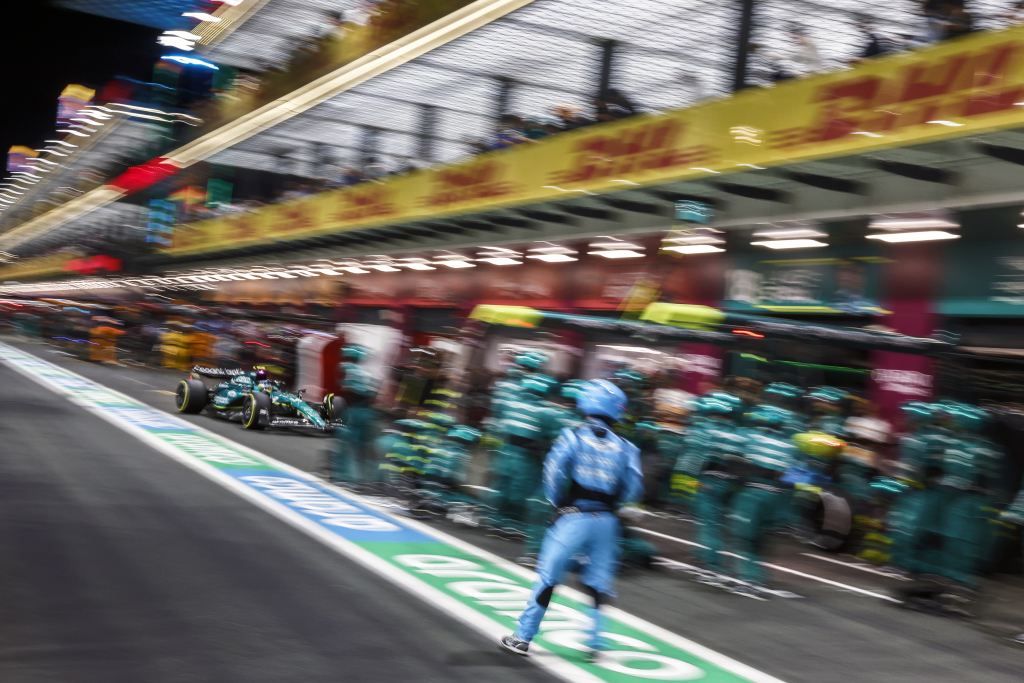
Three hours and 50 minutes after the checkered flag fell on the Saudi Arabian Grand Prix, the final race classification was officially published.
Put another way, it took nearly three times as long to finalize the result as it did to run the race itself. And once again it’s the FIA that is coming in for criticism.
If you need a refresher, Fernando Alonso lined up too far to the left of his grid slot, earning a five-second time penalty soon after the race started. The rule exists to ensure drivers are in the right position for jump starts to be registered, as sensors play a major part in detecting early movement as long as the car is in the correct spot.
No qualms there, and Aston Martin actually got a bit of a bonus from a bittersweet moment when the safety car was needed due to Lance Stroll’s retirement. Alonso could take his penalty during a pit stop under safety car conditions, losing less race time to his competitors.
The rear jack was touching the car ready to lift it once the five-second time penalty was served, and the FIA — through a combination of Race Control and the recently-added Remote Operations Centre (ROC) in Geneva — confirmed to the stewards that it w as happy with how the penalty had been served, so the stewards looked into it no further.
“Subsequently, at the last lap of the race, the stewards received a report from Race Control that they considered that the penalty was not properly served by Car 14 and they asked the stewards to investigate the matter,” an FIA document later explained. “The matter was reported to Race Control by ROC.”
This begs the question, given the fact the ROC had already approved the way the penalty was taken, were members in Geneva bored late in the race and took another look at the penalty? Or more likely, was it contacted by another team that was taking issue with the way it had been served?
“The stewards were shown video evidence of how Car 14 served the penalty by the Race Director and the Sporting Director. They stated that what was agreed at the Sporting Advisory Committee (SAC) meetings with the teams was that no part of the car could be touched while a penalty was being served as this would constitute working on the car.
“In this case, it was clear, that the car was touched by the rear jack. Based on the representation made to the stewards that there was an agreed position that touching the car would amount to ‘working’ on the car, the stewards decided to impose a penalty.”
The timing was more than suspicious, given how it removed the ability for Alonso to react by trying to extend his advantage over George Russell beyond the 10 seconds he was penalized, something he insisted he would have been able to do with ease if informed during the race.
While Aston Martin’s sporting director Andy Stevenson was walking up and down the paddock with a laptop tucked under his arm — a clear indication of visits to the FIA where he had documents to show — a rival team manager told me it was extremely likely another team had provided footage, and the fact a penalty had been handed out based on that suggested any appeal was unlikely to succeed.
But that counts against what is a growing list of head-in-hands moments when it comes to Formula 1’s governing body.
The FIA has been trying to regain the trust of fans ever since the 2021 championship finale, and it hardly had a perfect record from before that, either. But there have been multiple incidents over the past 12 months that have proven frustrating to watch play out, and Jeddah provided another one.